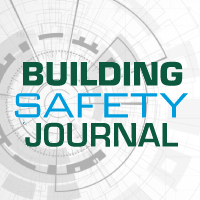
USGS scientists develop a new tool to determine if vermiculite insulation contains asbestos
![]() For most of the 20th century, American builders relied on asbestos-containing materials for all insulation requirements. Asbestos is thermally inert (meaning it doesn’t transfer heat or cold well), fireproof (used for both heat and fire control), chemically stable (unreactive when blended with other substances), and doesn’t conduct electricity (making it ideal for insulating electric wires and cables). Asbestos was non-corrosive, widely available and inexpensive, making it a favored building material.
For most of the 20th century, American builders relied on asbestos-containing materials for all insulation requirements. Asbestos is thermally inert (meaning it doesn’t transfer heat or cold well), fireproof (used for both heat and fire control), chemically stable (unreactive when blended with other substances), and doesn’t conduct electricity (making it ideal for insulating electric wires and cables). Asbestos was non-corrosive, widely available and inexpensive, making it a favored building material.
Asbestos fibers are easily pulled apart, which allows manufacturers to mix it with other materials such as vermiculite and magnesia to make different types of insulation. Asbestos is found in a high percentage of loose-fill vermiculite insulation. Vermiculite, a naturally occurring mineral composed of shiny flakes, is a lightweight, fire-resistant and odorless material and has been used in numerous products, including insulation for attics and walls. At the height of asbestos insulation use, building insulation products commonly contained 15-percent asbestos to 100-percent asbestos. Many types of asbestos insulation, including loose-fill, pipe wrap and spray-on, were friable and easily released asbestos fibers.
Today, we know that asbestos insulation was responsible for more asbestos exposure occurrences than any other asbestos-containing material of the 20th century. Exposure to asbestos causes cancer and increases your risk of developing lung diseases, including asbestosis, lung cancer or mesothelioma. There is no known safe level of asbestos exposure and disease may not occur until decades after exposure. It remains a toxic hazard in many homes and businesses to this day — approximately one million homes in the United States contain vermiculite attic insulation.
Families living in old homes and employees working in old commercial buildings are also endangered when aging asbestos insulation is disturbed through maintenance, renovation or wear and tear. Asbestos insulation in old school buildings has created an ongoing public health crisis that has affected multiple generations of students and teachers. Today, asbestos-related illnesses disproportionately affect veterans because of the military’s extensive use of the toxic mineral in the past.
Although asbestos mines are closed (many are Superfund sites), the existing insulation in many older houses and buildings still needs to be tested for asbestos. When vermiculite insulation is found in an attic, evaluating it for asbestos has traditionally involved collecting a sample and submitting it for potentially time-consuming analyses at an off-site laboratory. Now, scientists and partners from the U.S. Geological Survey (USGS) have created an onsite, time-saving technique for building inspectors to ascertain whether vermiculite insulation contains asbestos. This new technology measures the near-infrared light spectrum of insulation materials to help identify the source of vermiculite insulation and detect whether the insulation may be contaminated with a known source of asbestos. Vermiculite insulation can be analyzed while it is still in a residential or commercial structure using a portable spectrometer. Samples from attics and walls may be tested in a more timely and cost-efficient manner compared to other time-consuming, off-site traditional laboratory analysis methods, with accurate results. Instead, a report can be generated and given to the owner while on-site, along with information on remediation scenarios. The USGS is seeking to license this patented technology commercially in the United States.
Source: United States Geological Survey








